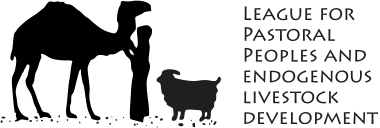Camels at the crossroads
Camels are the focus of the January 2005 edition of the New Agriculturist, an online magazine on agricultural development.
Articles by New Agriculturist reporter Susie Emmett cover the decline of camels in Rajasthan in western India, and their rising popularity in Kenya; the health benefits and market potential of camel milk; and the working camels of India and the racing camels of the Gulf.
Several of these articles are based on papers presented at the international conference on Saving the Camel and People’s Livelihoods, held on 23-25 November at Sadri, Rajasthan. This conference was hosted by Lokhit Pashu-Palak Sansthan as part of the LIFE Initiative.
Fewer camels at Pushkar Fair
There were 60,000 camels at Pushkar Fair this year, according the BBC’s Susie Emmett. But their numbers are falling. BBC Radio 4’s From Our Own Correspondent programme of 23 December 2004 included a segment on problems facing Raika camel breeders in Rajasthan. Many female camels are now sold for meat – breaking a longstanding taboo among the Raika. They are forced to sell the camels because the animals have nowhere to graze, says LPPS Director Hanwant Singh Rathore.
Saving Rajasthan’s camel herds: The perspective of camel breeders
Compiled by Arun Srivastava, Ilse Köhler-Rollefson, Hanwant Singh Rathore, and Uttra Kothari. Lokhit Pashu-Palak Sansthan
Over 50 camel breeders met in Sadri, Rajasthan in November 2004 to discuss the declining numbers of camels in Rajasthan. They recommended ways to increase access to grazing, improve veterinary services, and promote the marketing of camel milk and other products.
Download 650 kb, 370 kb, 27 pages
